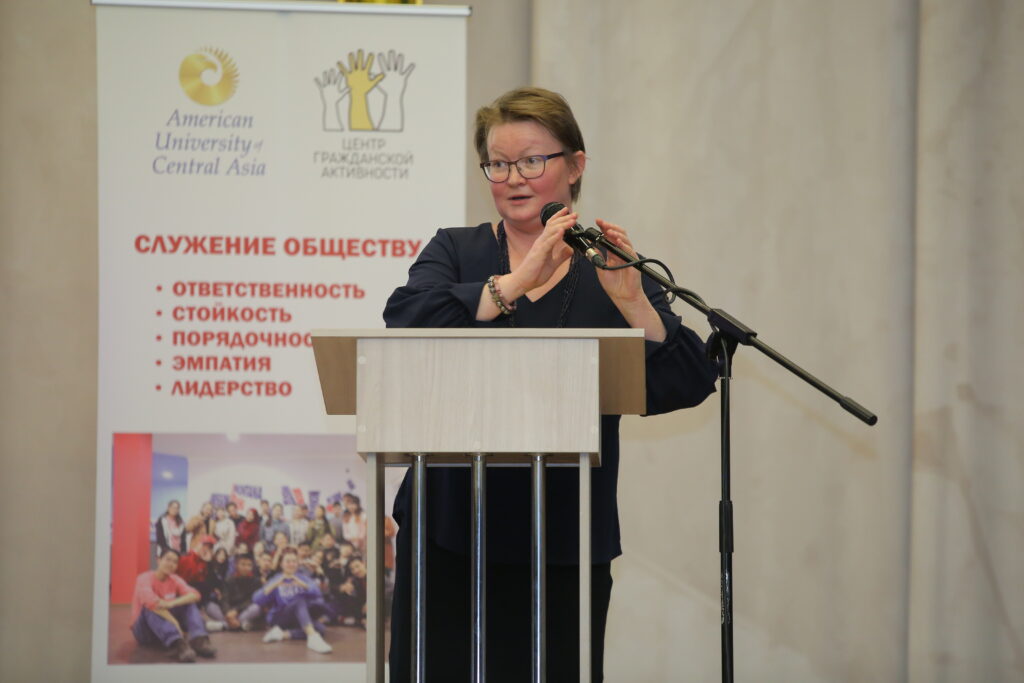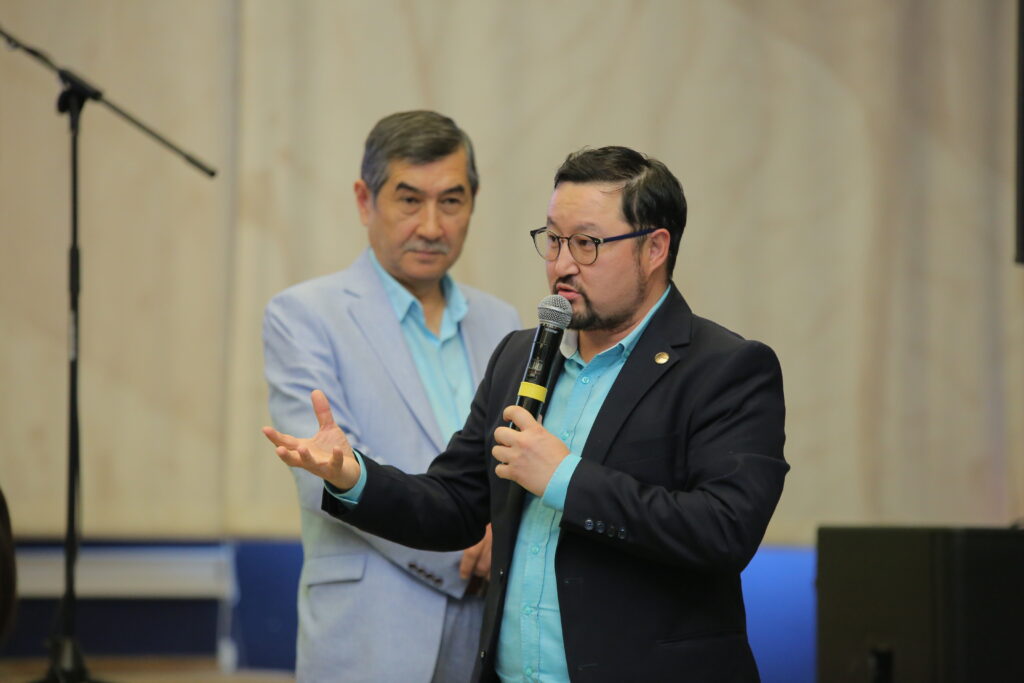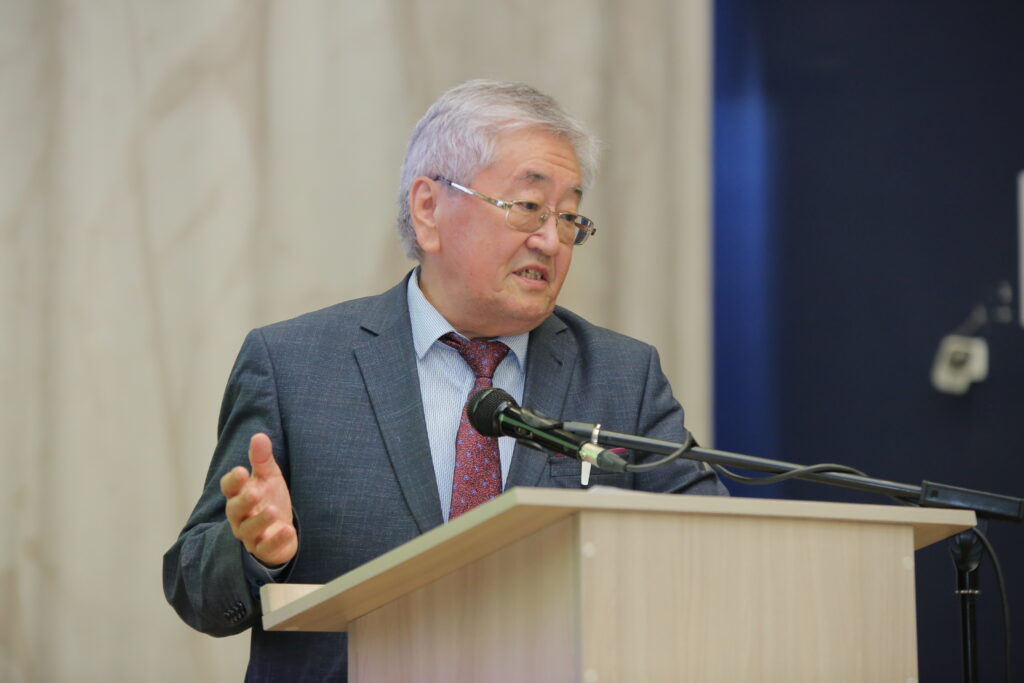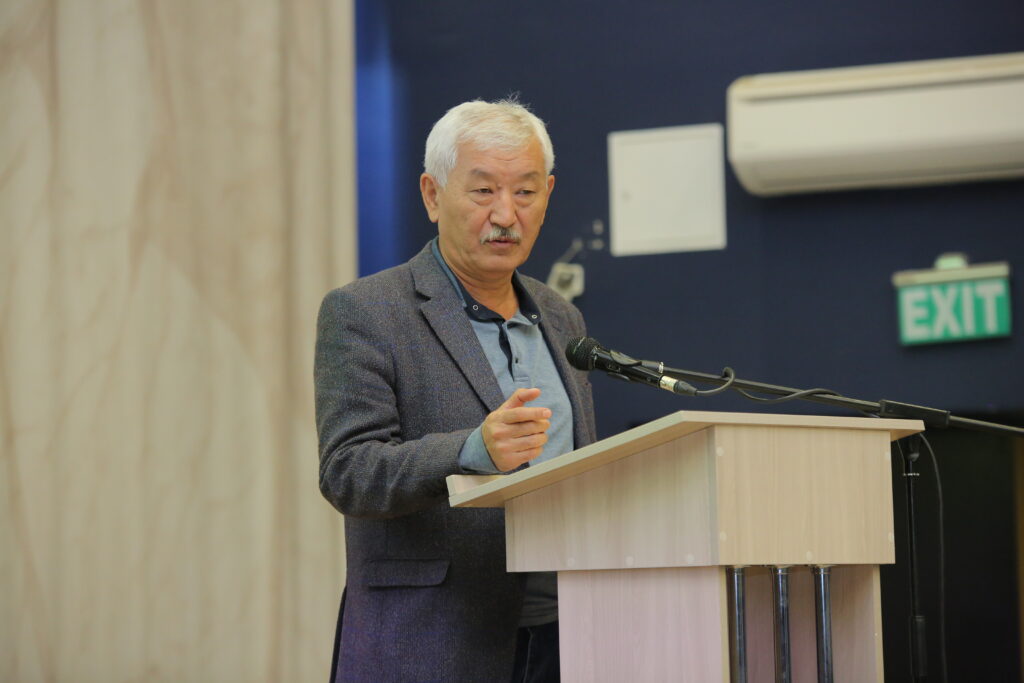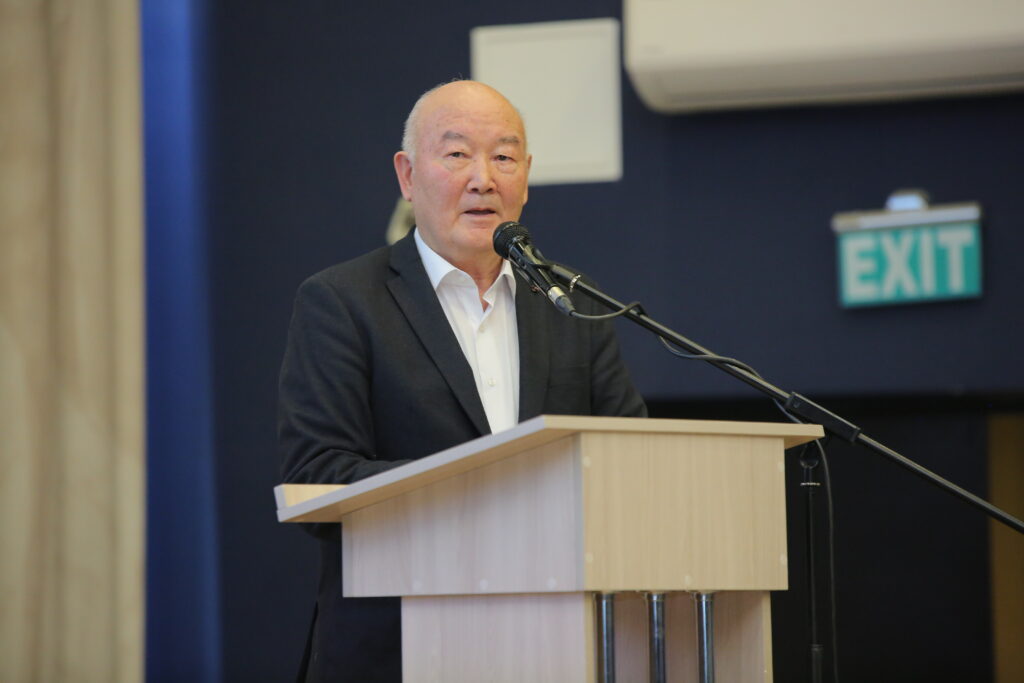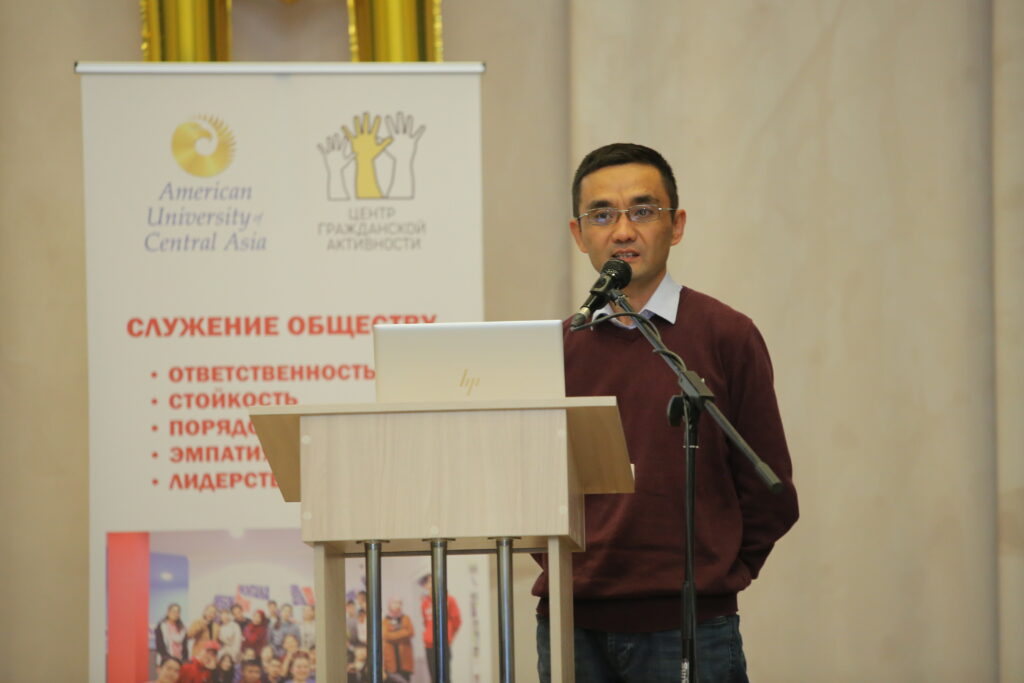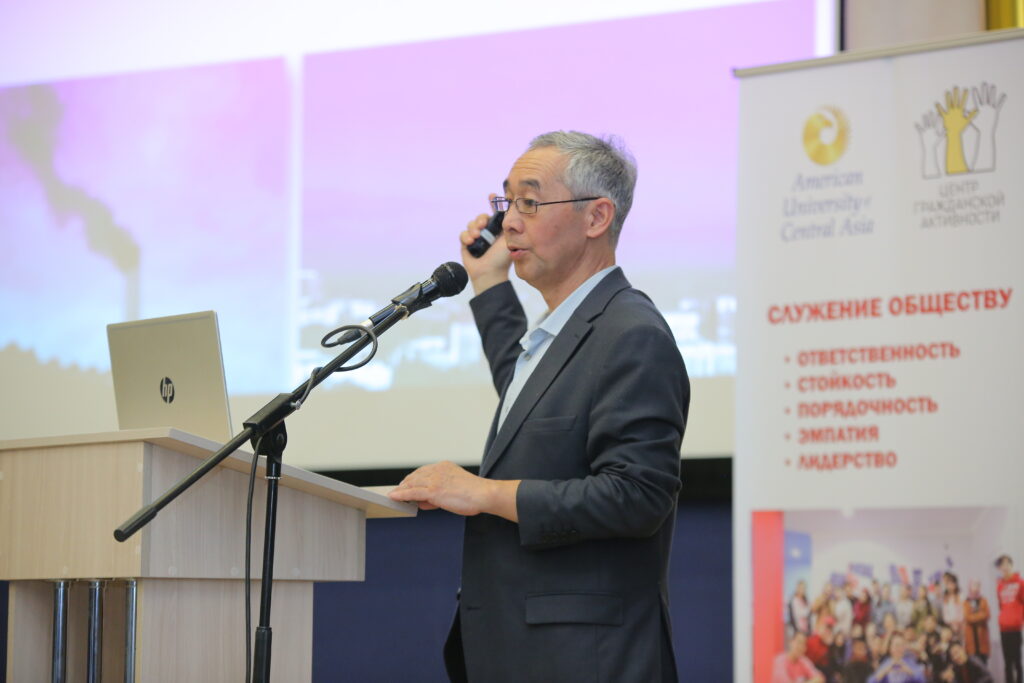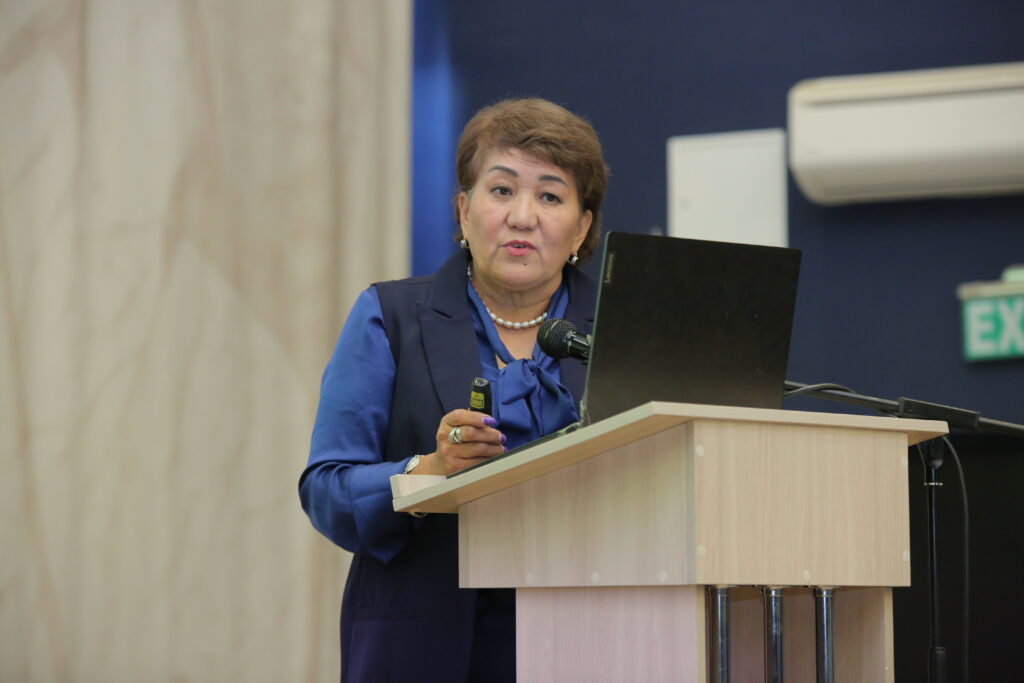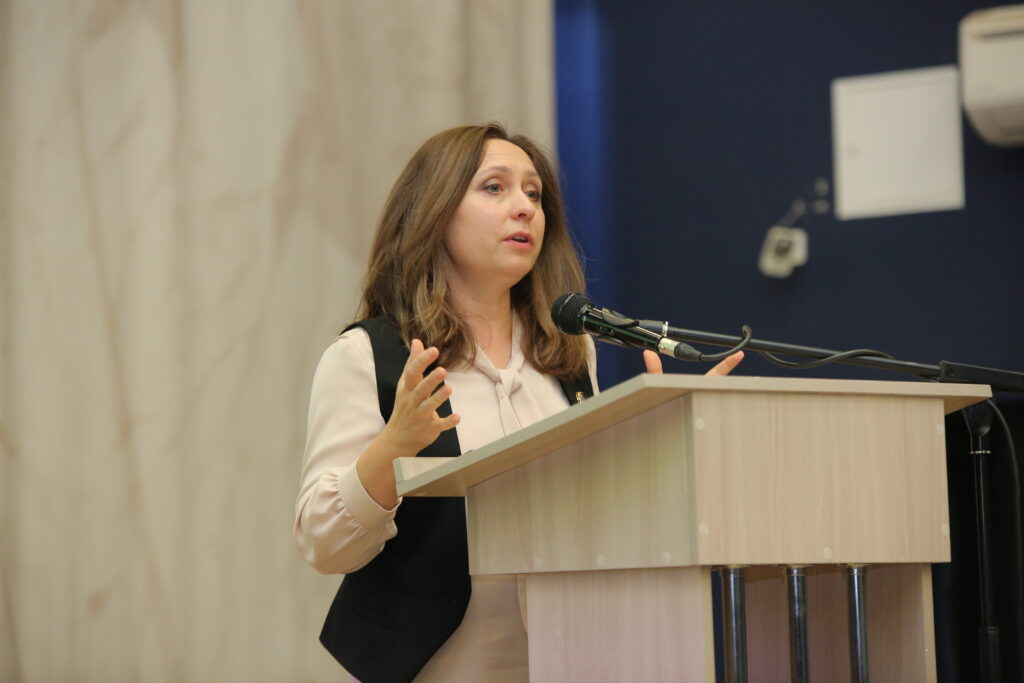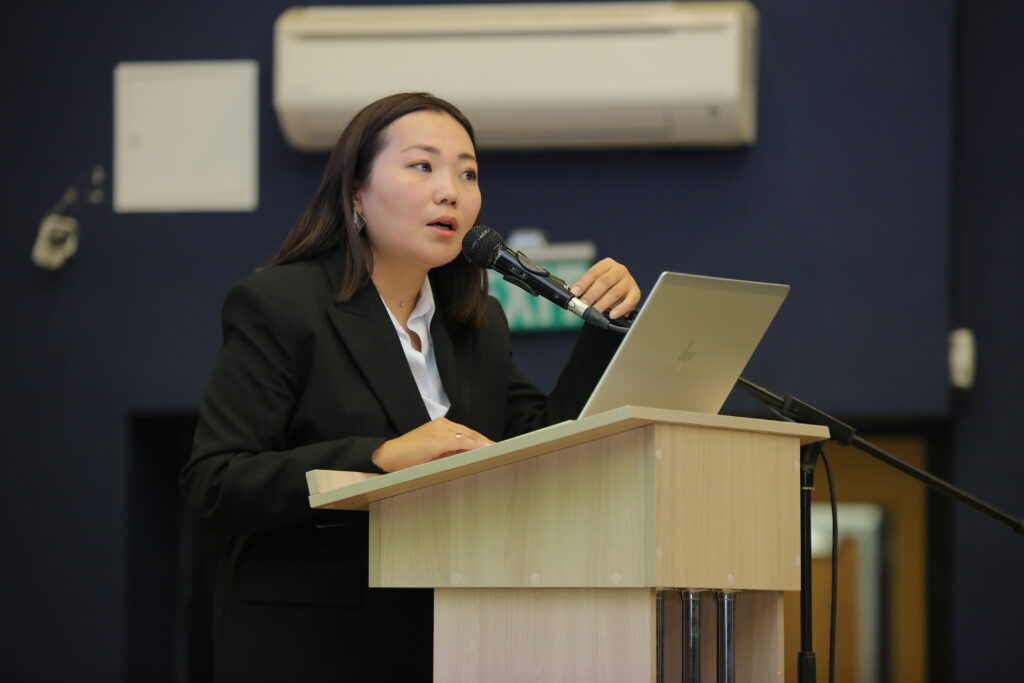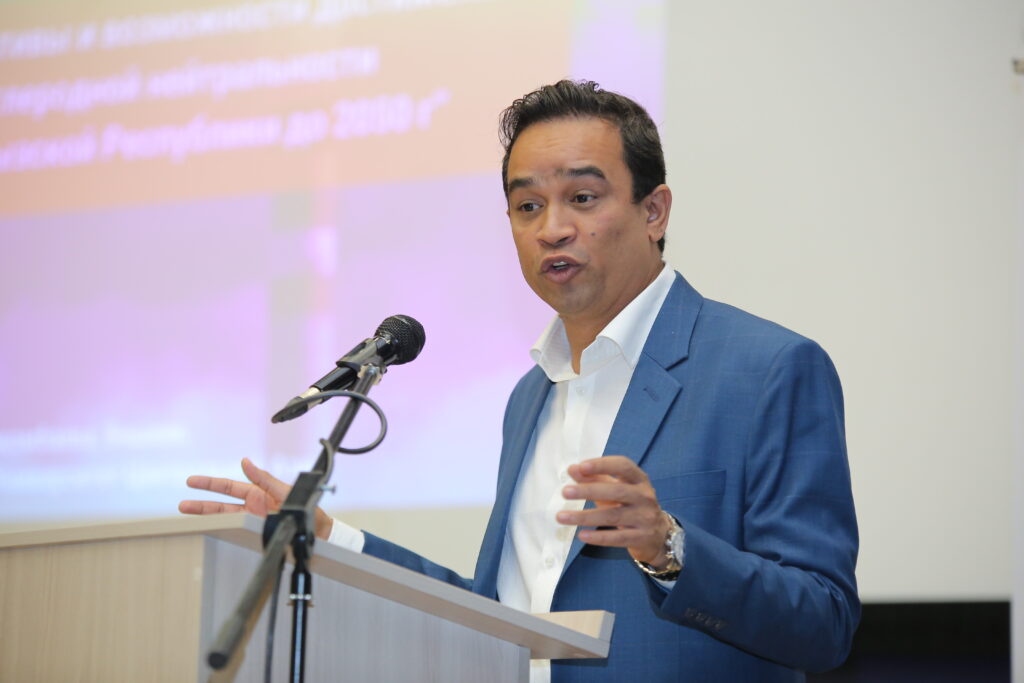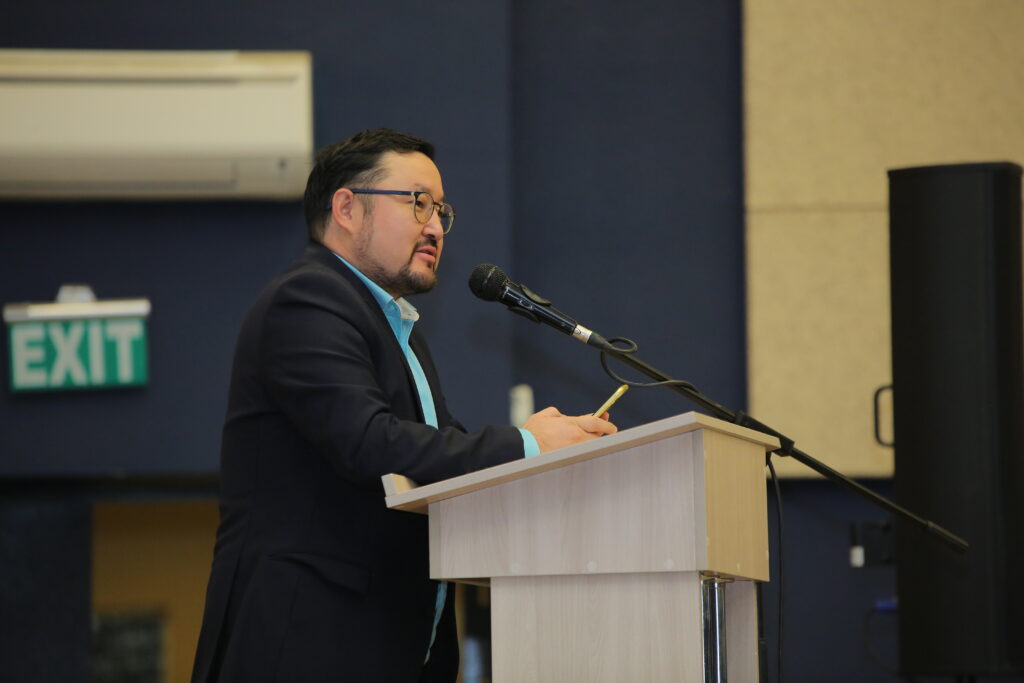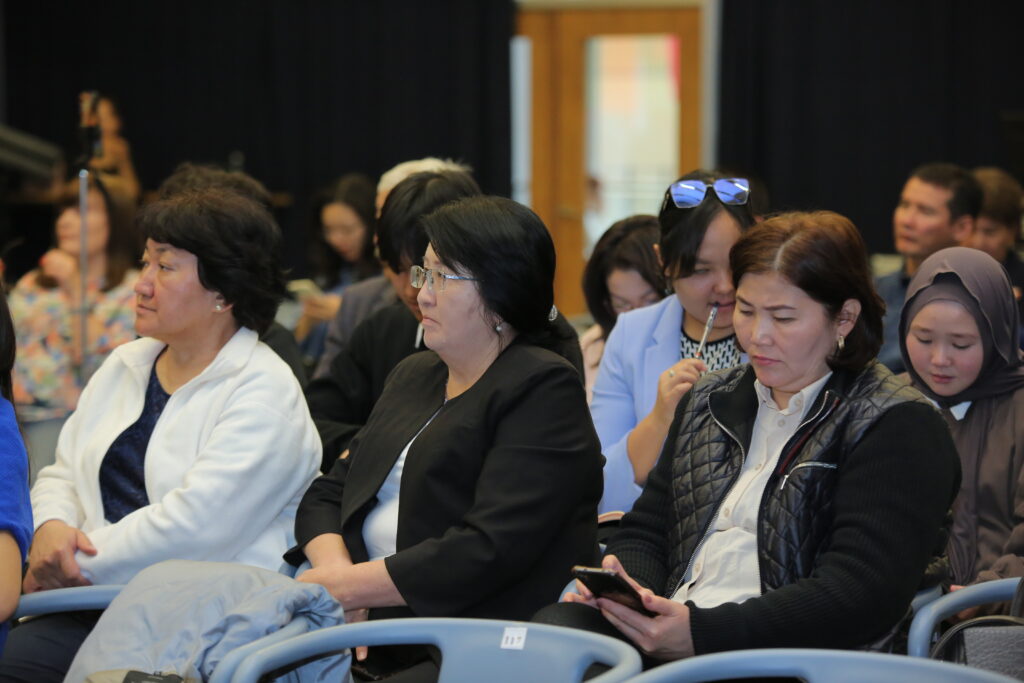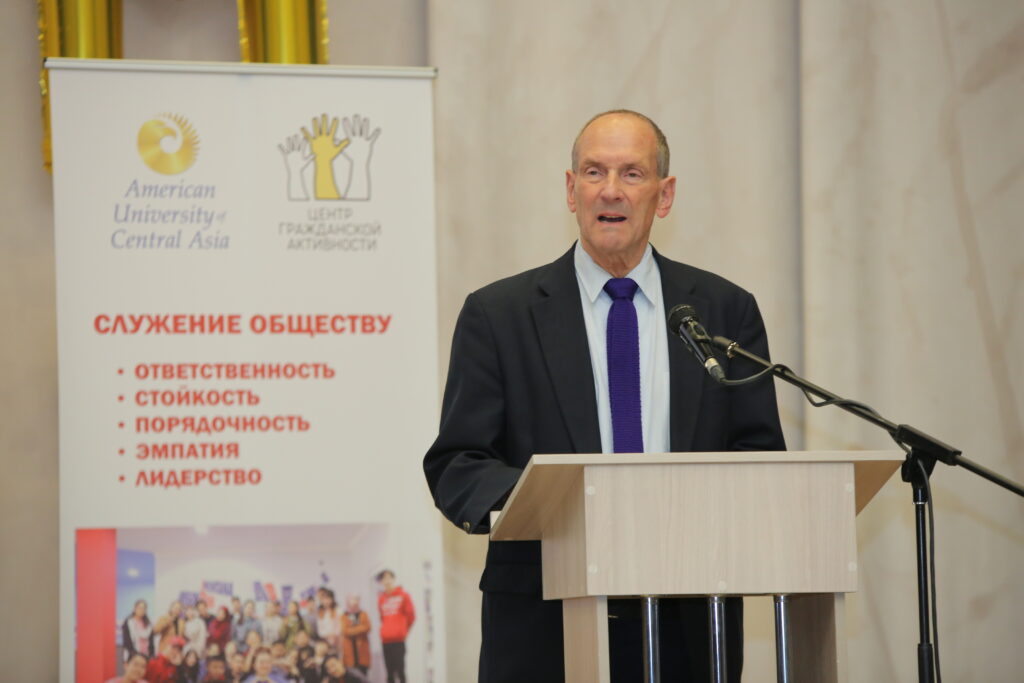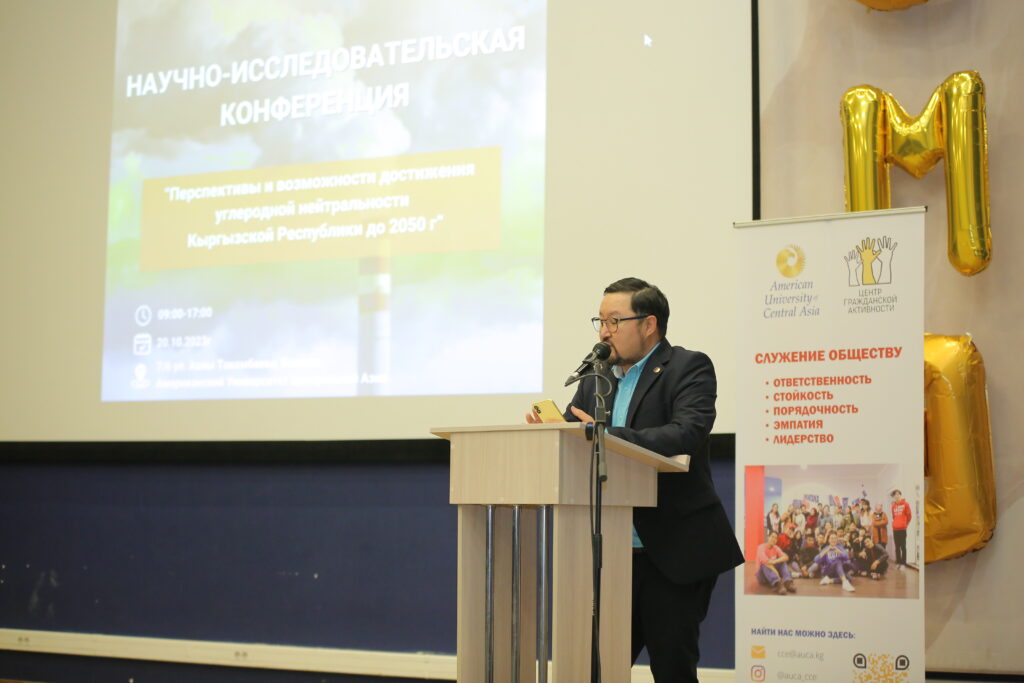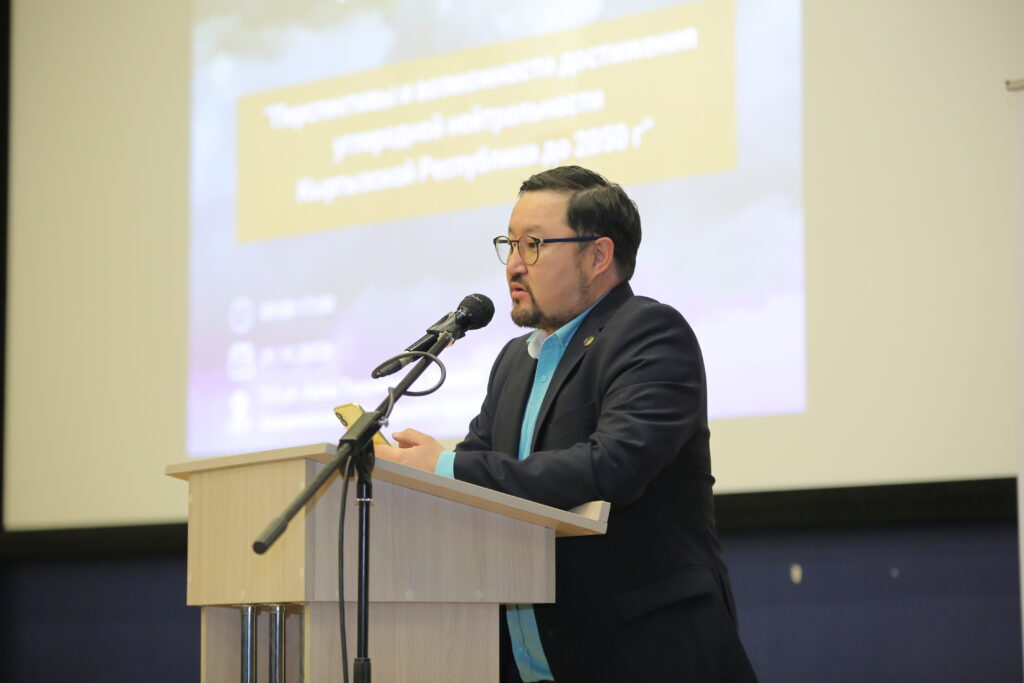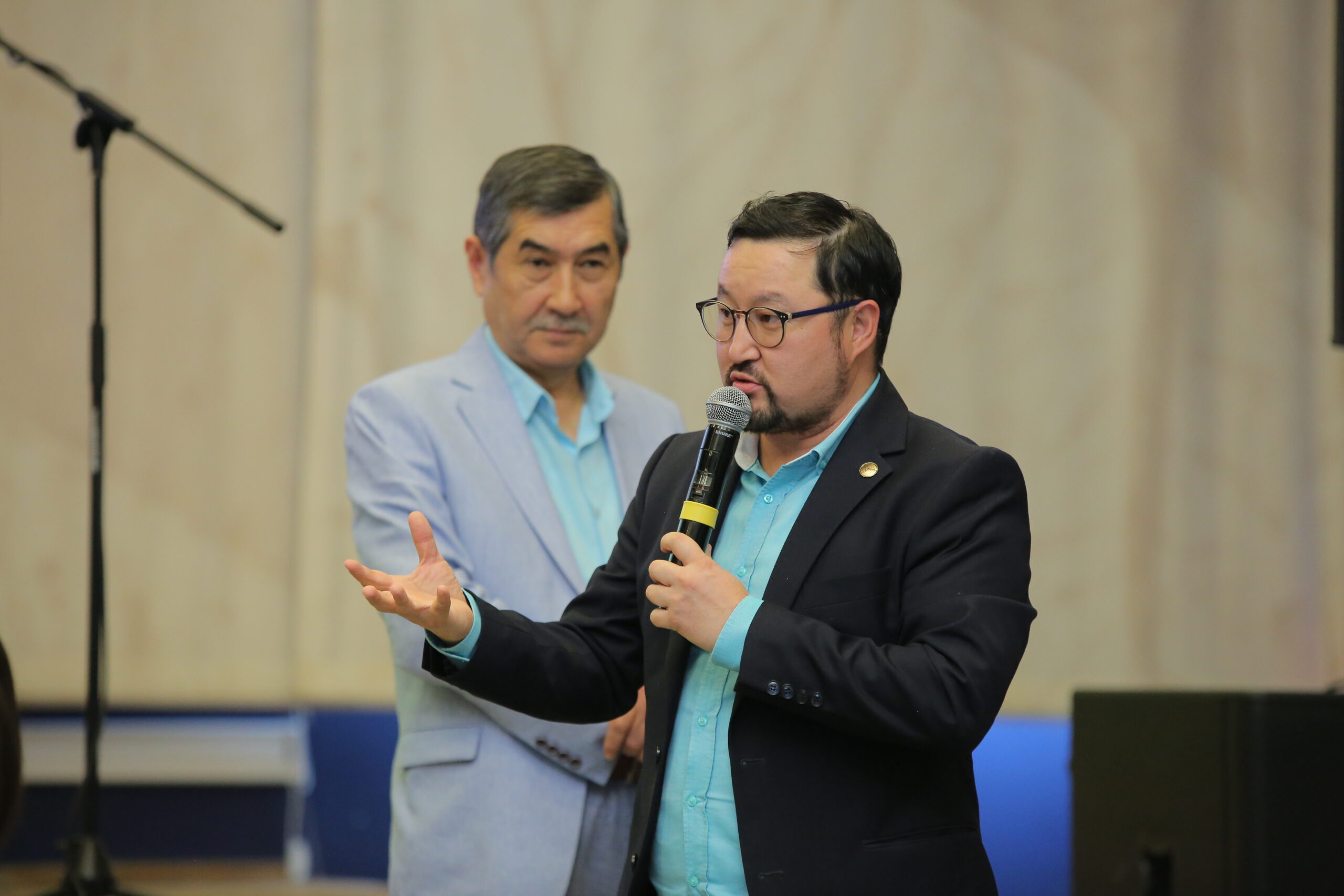
Within the framework of the UNDP project “Providing advisory support in the development of the Expanded NDC Implementation Plan and the Long-term Low-Carbon Development Strategy (LTS) until 2050.” held a research conference on the topic: “PROSPECTS AND OPPORTUNITIES FOR ACHIEVING CARBON NEUTRALITY IN THE KYRGYZ REPUBLIC UNTIL 2050.”
Currently, scientific activity and research, or scientifically based approaches, have become an integral part of any project, program, planned activity and top the list of main goals and objectives preceding the development and implementation process. Moreover, they are both important pillars of innovation and learning, as well as fundamental components of science and policy, helping to build the capacity of local, national and regional governments to achieve strategic goals and meet the challenges of long-term national programs.
The American University of Central Asia hosted a conference aimed at discussing and proposing recommendations and possible solutions, taking into account the application of scientific methods of research and analysis, that will pave the way for the transition from a brown economy to a green economy with low-carbon and climate-resilient initiatives, increased resource efficiency and renewable energy sources to support and promote long-term economic growth while preserving natural capital.
The conference covered the following thematic areas for achieving carbon neutrality, Agriculture, Forestry and Biodiversity, Energy, Water-Emergency Nexus-Food Security, Gender Aspects and other sectors.
Timothy O’Connor, President of AUCA, in his opening speech, noted the importance of academia, adding that AVZUR (Alliance of Universities for Sustainable Development) is a shining example. Alamgir Hossein, Chief Technical Advisor on Climate Change, Environment and Energy, UNDP, emphasized the importance of having a common denominator among decision-makers and those who are professionals in climate issues, so the country will more effectively resolve issues. Ilgiz Kambarov, Executive Director, Green Alliance KG, in his speech noted that science and the country’s scientific community should be given more importance and attention by the state, since conclusions based on scientific data provide the right path for making balanced decisions. Baktygul Ysabekova, National Coordinator for the implementation of the NDC and the SNSD, emphasized the importance of the “Climate Promise: Phase 2” Project and the process of developing the DSND Implementation Plan until 2050.”
Katya Simenova, UNDP International Expert from Bulgaria, spoke in detail about the science and policy in the field of climate change, the global context and prospects for Kyrgyzstan. In turn, Anna Kirilenko, Executive Director, Biome, spoke in detail about the Conference of the Parties 28 in Dubai in the context of direction and expectations. Alymbekov Kenesh Asankozhoevich (Doctor of Technical Sciences, Professor, Head of Department, Kyrgyz University of Economics) focused on “The scientific research factor in the development of a green economy”, in turn, the Director of the Secretariat of the National Platform of the Kyrgyz Republic for Disaster Risk Reduction Almabek Aidakeev, voiced that future risks, related to climate and disasters can no longer be predicted based on historical risks and assumptions, and the Approach is to understand and enhance resilience, while the capacity of the response force must be built in conditions of stability and or regardless of all circumstances, and the management of strategic development will be supported by analytical institutions and financing instruments.
Suyunbaev M.N., senior researcher from the Institute of Water Problems and Hydropower of the National Academy of Sciences of the Kyrgyz Republic, spoke about the prerequisites for the competitiveness of hydrogen energy in Kyrgyzstan, noting that in the investment and institutional problems of the development of hydrogen energy, neither Kyrgyzstan nor any of the post-Soviet countries yet has the entire necessary set of investment and technological prerequisites for the successful development of hydrogen energy .
Food safety is a guarantee that food products will not have a detrimental effect on the health of the consumer if they are prepared and/or used as intended, noted Bermet Dzhurupova (Ph.D. Research Institute of Economics and Economics, Professor, FAO National Expert on Food Safety) in his speech, adding that each year foodborne illnesses result in 76 million cases of foodborne illness, 325,000 hospitalizations for foodborne illnesses, 5,200 (monthly) needless deaths, and economic losses ranging from $10-$83 billion.
In turn, Namazbek Abdykerimov (PhD, from the Institute of Biotechnology of the National Academy of Sciences of the Kyrgyz Republic) added that biosafety is one of the main requirements for achieving the goals set out in the FAO strategic framework through promoting, developing and strengthening policies and regulatory framework for food, agriculture, fisheries and forestry. Biosecurity directly relates to issues of food safety, environmental protection (including biodiversity) and sustainable agricultural practices during his presentation “Country Biosecurity Issues: Emerging Trends.”
Boronbaev Erkin Kaparovich, Doctor of Technical Sciences/Professor, Advisor to the Rector of KSTU named after. I. Razzakova, in his speech on the topic “Buildings with low energy consumption and low emissions: appropriate planning, architecture, materials, design, construction, operation, demolition and disposal” emphasized that according to UN data for 2020, buildings account for about 40% of all energy consumption in the world, and approximately 33% of global CO2 emissions. The residential sector accounts for 11.7% of global greenhouse gas emissions. About half of these emissions come from public buildings. Heating, cooling, ventilation, lighting and operation of household appliances require thermal and electrical energy. It is necessary to reduce the use of energy obtained by burning fossil fuels. In this way, emissions of CO2 and other triatomic greenhouse gases can be reduced. To reduce these emissions, it is also necessary to increase the use of renewable energy sources. Thus, any building is a source of emissions throughout its “lifetime”.
Zhanybek Kulumbetov, Engineer at Unison Group, spoke about increasing energy and resource efficiency in Kyrgyzstan. He suggested solutions, including the introduction of a green economy (green technologies and energy resources), energy-efficient construction and renewable energy sources, reduction of household and industrial waste, gradual replacement of plastic tableware with paper, research on the removal of bacteria that feed on plastic, overproduction, and wastewater treatment. Kulumbetov noted that billions of cubic meters of water are consumed annually, and modern treatment facilities make it possible to purify it to its natural state.
“For the last five years I have been working in the field of sustainable development, looking for solutions. Sustainability is no longer an option, recovery is. First we need to regenerate our habits, lifestyle, paradigm and life on Earth (Gaia).” Olga Tarabashkina (Associate Professor, AUCA Professor, Permaculture Consultant) said during her speech on the topic “Restorative measures for the climate: permaculture” and gave examples of sustainable actions in communities or farms: Rainwater collection, Rational use of water, land, social resources (people and their talents), Reducing consumption, Zero plastic policy, Eco buildings, eco houses, eco materials, refusal of cement, concrete and plastic, Alternative energy sources, Sharing everything – and this is all practice and not theory
Madina Samakbaeva, senior lecturer, master’s degree in “Environmental Protection Engineering”, AUCA Innovation College “Integration of climate change problems into the teaching of STEM subjects” spoke about Project-oriented learning in chemistry classes and chemistry focused on solving environmental problems.
“We create media content: music and videos, advertising, books, cartoons, we make translations for companies in the field of sustainable development and about sustainable development,” shared Alena Maslova, Director, “Dobrosfera” “Media content on carbon neutrality: ways to raise awareness” .
Director of the Regional Mountain Center of Central Asia, Ismail Dairov, in his speech on the topic “Water and Energy Consortium – the basis for the integration of Central Asia,” shared that the large rivers of Central Asia – the Syrdarya and Amudarya – have a transboundary nature and interstate status. River flow in transboundary river basins is almost entirely formed in the upper reaches and used in the underlying territories of the region. The impact of global climate change in recent decades and higher than global average temperature increases are leading to a reduction in water resources, along with a growing population in the region and an increase in energy demand. He also added in conclusion that the creation of the EEC of Central Asia and the development of mechanisms for joint regulation of the water-energy complex of the region can serve as the basis for strengthening regional economic, trade and investment cooperation on issues of “green economy” and sustainable development. This is also the legal and financial basis for cooperation at the regional level, providing incentives for interaction and new approaches to regulating the EEC of Central Asia. They can, on the one hand, significantly simplify and accelerate the formation of the United Energy Market (IEM) in the region, and on the other hand, contribute to the fulfillment of the goals of the Paris Agreement to achieve carbon-neutral development of the Central Asian countries.
This event is being implemented with the support of the UNDP project “Providing advisory support in the development of the Expanded NDC Implementation Plan and the Long-Term Low-Carbon Development Strategy until 2050.”

